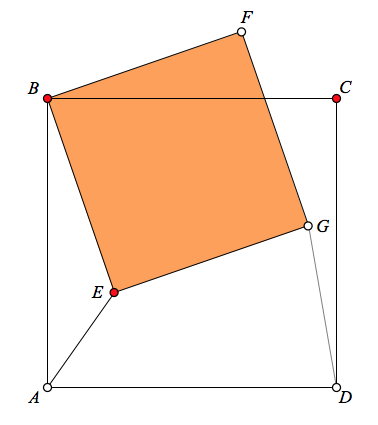 My first thought was that surely the problem was … Continue Reading ››
My first thought was that surely the problem was … Continue Reading ››A Geometry Gem from Twitter
 My first thought was that surely the problem was … Continue Reading ››
My first thought was that surely the problem was … Continue Reading ›› My first thought was that surely the problem was … Continue Reading ››
My first thought was that surely the problem was … Continue Reading ››What would it take to build a better number grid for young learners? A typical number grid contains 10 columns with the numbers progressing from 1-10, 11-20, 21-30 and so on, from row to row. We decided to upend this tradition and make a dynamic number grid with Web Sketchpad that allows students to … Continue Reading ››
In the interactive Web Sketchpad model below (and here on its own page), ABCD is an arbitrary quadrilateral whose midpoints form quadrilateral EFGH. Drag any vertex of ABCD. What do you notice about EFGH?
The midpoint quadrilateral theorem, attributed to the French mathematician Pierre Varignon, is relatively new in the canon of geometry theorems, dating to 1731. Mathematics … Continue Reading ››
In my last post, I presented a lovely geometry problem from Japan that was ideally suited to a dynamic geometry approach. Below is a new problem whose construction is nearly identical to the original one. The text says, "Five isosceles triangles have their bases on one line, and there are 10 rhombi. One length of the rhombus … Continue Reading ››
Here is a wonderful geometry problem from Japan: The five triangles below are all isosceles. The quadrilaterals are all rhombi. The shaded quadrilateral is a square. What is the area of the square?
I wondered at first whether the English translation of the problem was correct because with so many side … Continue Reading ››